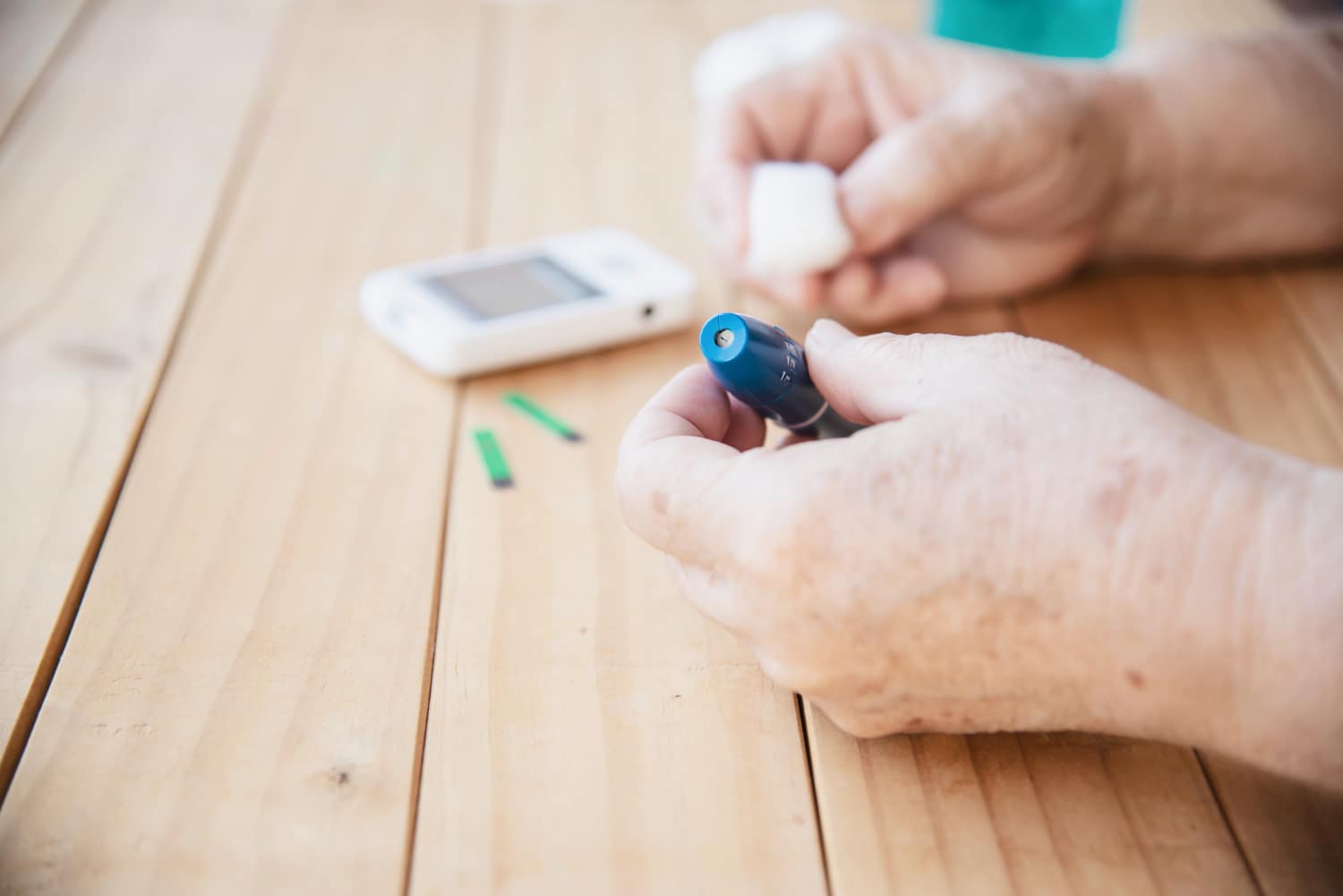The Connection Between Blood Sugar Levels and Migraine Attacks
Introduction to The Links Between Blood Sugar Levels and How They Cause Migraine Attacks
Migraines are complex, excruciating headaches that cause severe pain, light sensitivity, nausea, and a variety of other symptoms. Although the specific etiology of migraines is unknown, new study indicates that blood sugar levels may play an important role in causing or aggravating these attacks. This blog by Jaslok Hospital, the best hospital for RTMS for migraine in Mumbai, delves at how blood sugar swings affect migraines, the common causes of these imbalances, and how to manage blood sugar to lessen migraine frequency and intensity.
Understanding Migraines and Their Triggers

Migraines affect around 12% of the global population, including adults and children. While stress, hormonal changes, specific foods, and environmental triggers are well-known, blood sugar regulation has lately been investigated by the Best migraine specialist in mumbai as a potential influence in migraine management.
Migraines typically develop in phases:
- Prodrome phase: It includes changes in mood, energy, and desires prior to the headache.
- Aura Phase: Visual disturbances or other sensory abnormalities may occur.
- Pain Phase: Severe headache pain, usually one-sided and pulsing, with nausea or light sensitivity.
- Postdrome Phase: A “migraine hangover” may occur, leaving the person feeling fatigued.
Understanding how blood sugar affects these phases can help the Best migraine doctors in mumbai find better strategies to control migraines.
Blood Sugar Levels and Their Impact on the Brain

The brain uses glucose, a type of sugar, as its principal energy source. When blood sugar levels remain steady, the brain can function optimally. However, severe reductions or surges in glucose can cause brain cells to malfunction, affecting neurotransmitters such as serotonin and dopamine. These neurotransmitters play important roles in mood control, sleep, and pain perception, all of which contribute to migraine formation.
Two frequent blood sugar-related disorders that may provoke migraines are hypoglycemia (low blood sugar) and hyperglycemia (high blood sugar).
- Hypoglycemia: When blood sugar levels drop too low, the brain may not receive enough glucose, resulting in headaches and migraines. Symptoms of hypoglycemia include perspiration, disorientation, shakiness, and irritability.
- Hyperglycemia: High blood sugar levels can trigger inflammation and oxidative stress, resulting in migraines. Chronic hyperglycemia, as found in untreated diabetes, can exacerbate the frequency and severity of migraine attacks.
How Blood Sugar Levels Trigger Migraine Attacks?

Blood sugar changes affect the brain in numerous ways, potentially contributing to migraines.
- Neurotransmitter Disruption: Blood sugar fluctuations can impair the manufacturing of neurotransmitters like serotonin. Lower levels of serotonin have been linked to greater pain sensitivity and are a known trigger for migraines.
- Hormonal Response: Sudden blood sugar reductions cause the production of stress hormones such as cortisol and adrenaline, which raise heart rate and blood pressure. This response may further activate the brain, exacerbating migraine symptoms.
- Dehydration and Electrolyte Imbalance: Blood sugar irregularities can cause dehydration or an imbalance of electrolytes such as sodium and potassium. These changes may raise the likelihood of experiencing headaches or migraines.
- Inflammatory Response: Blood sugar spikes can promote inflammation, which, if prolonged, can contribute to increased pain sensitivity and migraine risk.
Common Causes of Blood Sugar Fluctuations
Best rtms treatment clinic for migraine in mumbai states that blood sugar fluctuations can be caused by a variety of events, including:
- Diet: Skipping meals, eating sugary or high-carbohydrate foods, and using coffee or alcohol can all result in large changes in blood sugar levels.
- Stress: Physical or mental stress can increase cortisol levels, which raises blood sugar levels.
- Poor Sleep Patterns: Sleep deprivation or irregular sleep patterns disturb hormone levels, which affects glucose regulation.
- Sedentary Lifestyle: Physical inactivity can impair insulin sensitivity, resulting in elevated blood sugar levels.
- Medical Conditions: Insulin resistance, diabetes, and polycystic ovarian syndrome (PCOS) are all known to alter blood sugar levels and are frequently associated with headaches and migraines.
Recognizing Blood Sugar-Related Migraine Triggers

Understanding your individual migraine triggers is critical for the best RTMS treatment clinic for migraine in Mumbai for controlling migraine attacks.. If blood sugar is regarded as a trigger, the following symptoms can assist in identifying probable issues:
- Preceding symptoms: If you have symptoms like dizziness, shakiness, or sudden irritability before a migraine, blood sugar variations could be to blame.
- Food and Hunger Patterns: Noticing migraines after skipping meals, eating sugary snacks, or eating high-carb meals may indicate a relationship between blood sugar and migraines.
- Headaches on waking: Blood sugar levels might drop overnight, particularly if the last meal of the day was low or high in sugar. Morning headaches may indicate that nighttime hypoglycemia contributes to migraines.
Dietary and Lifestyle Tips for Managing Blood Sugar Levels and Reducing Migraine Risk
Maintaining stable blood sugar levels is crucial for decreasing migraine triggers and promoting overall health. By implementing specific food choices and lifestyle routines, you can reduce glucose swings that may contribute to migraine episodes. Here are some useful ideas for controlling blood sugar and lowering your risk of migraines.
1. Eat Balanced Meals Regularly

- Protein and Fiber-Rich Foods: Including lean protein, fiber, and healthy fats in each meal can help keep blood sugar stable. Protein-rich foods such as eggs, lean meats, and nuts, as well as fiber found in vegetables and whole grains, decrease glucose absorption, minimizing spikes and crashes.
- Avoid high-sugar foods: Foods heavy in refined sugars or simple carbohydrates can produce blood sugar increases followed by dumps, potentially triggering migraines. Choose complex carbohydrates instead, such as oats, quinoa, and sweet potatoes.
2. Stay Hydrated

Dehydration can increase blood sugar problems because the body struggles to control glucose adequately without enough fluid intake. Aim for 8-10 glasses of water every day to stay hydrated and electrolyte balanced.
3. Manage Stress

Chronic stress causes regular releases of cortisol and adrenaline, which raises blood sugar levels. Regular stress management techniques, such as meditation, yoga, or deep breathing exercises, can help balance blood sugar and reduce migraine risk.
4. Exercise Regularly

Physical activity improves insulin sensitivity, which can help keep blood sugar levels constant. Aim for at least 150 minutes of moderate activity per week, which can boost general health and minimize migraine frequency.
5. Monitor Caffeine and Alcohol Intake

While little amounts of caffeine can help with migraine symptoms, too much coffee or alcohol can cause dehydration and blood sugar changes. Moderation is essential; if you’re sensitive to these chemicals, limit or avoid them.
6. Get Consistent Sleep

Poor sleep quality can cause glucose dysregulation. Aiming for 7-9 hours of restorative sleep every night can help control cortisol levels, increase blood sugar stability, and lower the likelihood of migraine attacks.
Medical Management and Monitoring for Blood Sugar-Related Migraines

If lifestyle changes alone are insufficient, consulting a healthcare professional is required. Best migraine specialist in Mumbai might recommend:
- Regular Blood Sugar Monitoring: Continuous glucose monitors (CGMs) can help people with diabetes or insulin resistance measure their blood sugar in real time and uncover migraine-related patterns.
- Preventive medications: If you get regular migraines, Best migraine doctors in mumbai may recommend preventive drugs, such as those that assist balance blood sugar or reduce insulin resistance.
- Medical Nutritional Therapy: Working with a registered dietitian can provide personalised advice on regulating blood sugar through diet, perhaps reducing migraine frequency.
While the relationship between blood sugar and migraines is complex, regulating blood sugar levels can help manage migraines and improve overall health. Tracking migraine patterns, keeping stable blood sugar levels through food and lifestyle changes, and seeking medical advice when necessary can all help minimize the frequency and severity of migraine attacks. Adopting these behaviors may help you avoid migraines while also improving your health and well-being.
Managing blood sugar levels can play a crucial role in reducing migraine frequency and improving quality of life. For personalized care and expert guidance on managing migraines and blood sugar issues, trust Jaslok Hospital’s team of Best migraine specialists in mumbai. With advanced facilities and compassionate care, Jaslok Hospital, Best hospital for rtms for migraine in mumbai, is here to support your journey to better health.


